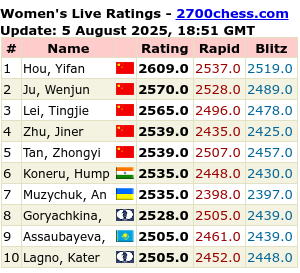An old game, my first Team 4545 League match from February, 2010.
I remember it as an enjoyable game, but more so as one typical of an amateur player, for example:
1) A belief that knowing a few moves in the Sicilian gives an understanding of how to play it
2) Not recognising a non-book move, and more, what to do after seeing it
3) Understanding that a draw is an acceptable result, and can be useful sometimes
4) Recognising that anyone can find one good move if they think hard and clearly enough.
But my biggest memory and my learning point in it was finding the drawing move....
Here we go, a few moves into a Sicilian...
 |
| 6...b5 |
However, the reply 6...b5 is not a usual Sicilian move for Black. Far more common is e5, with a strong counter in the centre, forcing White to lose a tempo by moving the knight.
So, for the same reasons (a counter in the centre ), and to prevent Black's e5, the next white move should be 7.e5.
In fact e5 is the best choice over the next few moves, but as a typical amateur 'knowing Sicilian moves' but not understanding why, I do not play it, continuing with moves that develop pieces, such as Bd3, Qe2 and 0-0.
All are sensible, solid and developing moves, but I'm making the mistake of not looking at the position in front of me, and playing moves that I remember are 'part of' the Sicilian' : I think I'm playing the theory, but I'm not playing chess.
The fact is, that since Black has made an unusual move ( 6...b5 ) and hasn't made a more usual move ( e5, though others are possible ), then as White, I should notice these things and play e5 myself : its a great move !
Hopefully, two years further on than this game, I am able to recognise this point more often, although let's face it, if I spotted it every time, I would be knocking at the door of a higher chess level, as that is surely one of the things that differentiates the thinking chess player from the 'woodpusher'.
In the game, I do eventually play e5, but it is three moves too late, and the wrong time : a typical amateur mistake.
An oversight leaves me a pawn down, and, against a relatively active opponent, probably losing, even I can sense that !
But I have a chance at redemption. A few moves later, after 16...0-0 ,we reach the following position:
 |
| White to play and draw |
I also knew after playing it that Black thought the same, as he spent 22 minutes ( count them ! ) formulating his reply.
So yes, I played the correct move, and accurate follow ups, but despite knowing I had the draw, I strove to make it a win, even though it was evident that both of us knew the draw was there !
You can guess what happened.
I over-reached, believing that with my "drawing-trump" I was safe, but in the tension of the moment, it was I who made the mistake, and though I played on for another 35+ moves, forcing Black to prove his win, there was really no way out.
Here, dear reader, is the fateful move.
I had 4 choices. One is an easy draw, two others take longer to get there, but still draw.
Naturally, I played the fourth, and losing move.
 |
| White to play and draw after 25...Qc5 |
Although its nice to crow over the one good move I found in this game, what would really improve me is if I made that effort to find a good move every time.
I might not succeed, but the effort of trying would make a huge difference to my understanding, and rate of improvement.
I'll leave it to you to find the drawing move(s) on both occasions. Not that difficult, especially on move 25 !


0 comments:
Post a Comment